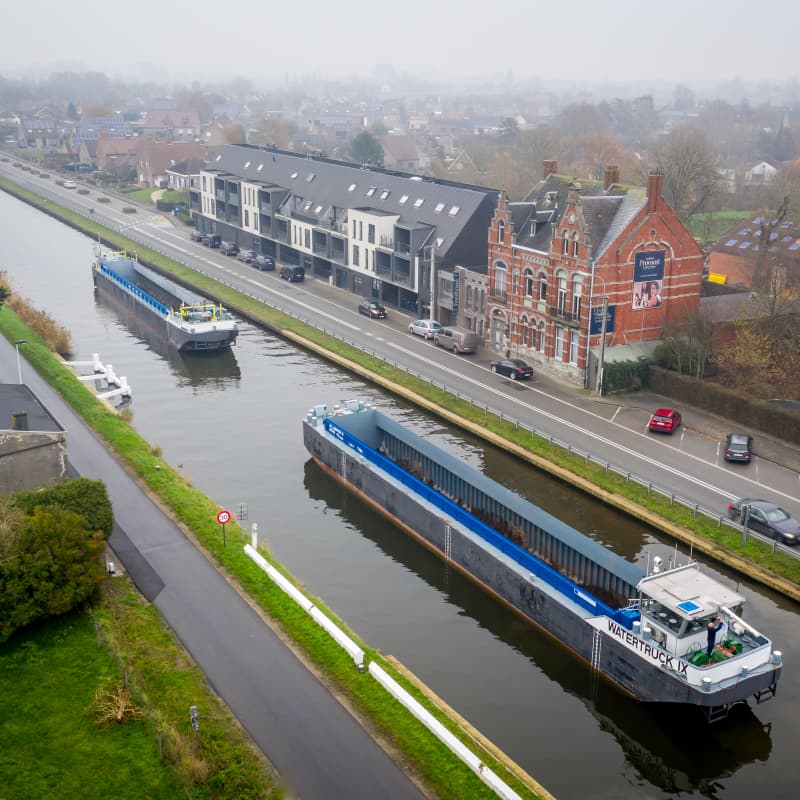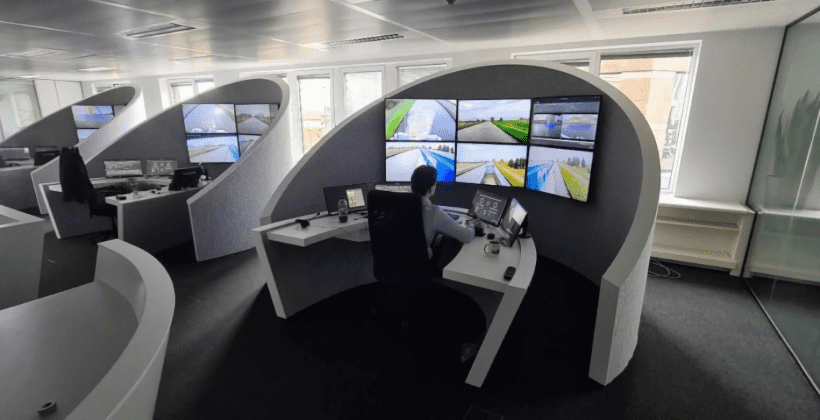Smart shipping
With a navigable waterway network of over 1,000 km, inland navigation in Flanders is an interesting alternative to road freight transport. With Smart Shipping, we want to improve the efficiency of that inland shipping network. Data sharing, logistics innovation and vessel automation are a core part of this. Our waterways and the inland waterway transport do not stop at our Flemish borders. That is why working with our international partners is essential.

Objectives
With the further development of automated navigation, Flanders aims to:
- Stap 1
Increase efficiency of inland waterway transport
- Stap 2
Address the labour shortages and attract newcomers to the sector
- Stap 3
Enable new business cases and flows of goods, including by upgrading small waterways
- Stap 4
Help green the sector and increase the modal share of inland navigation, contributing to the realisation of the European Green Deal
Specifically, the Smart Shipping programme works around 4 pillars:
- Stap 1
Smart vessels
with minimal form of automation on board - Stap 2
Smart waterway infrastructure
automated and operated remotely - Stap 3
Smart data sharing
where all communication between the government and users is digitised and follows internationally standardised procedures - Stap 4
Smart regulation
that supports innovations and forward-looking initiatives while maintaining safety
Room for innovation
To test and develop Smart Shipping safely, Flanders has developed a legal framework that supports innovation. We are also investing in test infrastructure, such as the coastal and ocean basin and the towing tank for ship manoeuvres in shallow water at Flanders Hydraulics’ Maritime Research Centre. This will allow us to explore scenarios around Smart Shipping and, on the basis of that, set up and test models.
Come on board

In CESNI, CCNR and the UNECE, we are helping to create a stable framework for Smart Shipping in Europe. We are also participating in the ‘Horizon 2020’ research project AUTOSHIP and in an international PIANC working group mapping the effects of smart ships on inland navigation infrastructure. Furthermore, we aim to fine-tune and improve our models with additional international collaborations. In turn, our own infrastructure and experts are available for assignments abroad.